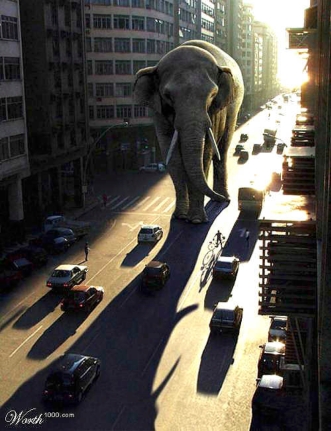Writing in the scientific journal Bioscience, 15,364 scientists from 184 countries have issued a “warning to humanity” and present a radical agenda to protect planet Earth. We, the billions of people believing in human exceptionalism, categorically reject this agenda and issue in return a stark warning to planet Earth. No amount of facts showing that planet Earth is in a dire state will have us changing our mindset. We do not care about planet Earth. We care about our next devices and their latest cool features. We want more stuff.
The authors of this warning ignore the obvious facts that the era of poets marveling at the diversity of flower or insect species is over and that the real-world wildlife has now become obsolete. We simply take our smartphones to overlay customized virtual creatures on our surrounding environment and dispose them when new trends dictate. There is no longer a need to preserve filthy and dangerous wildlife that moreover lives in places where Amazon does not deliver. More iPhone are sold per day than there are lions, tigers, elephants and gorillas on the planet: this should alert the signatories to what really matters, were they not ideologically biased against human progress.
Those scientists argue that we are approaching many of the planet limits. We refuse to accept any kind of limits: growth must indefinitely prevail unrestricted. We officially summon planet Earth to abandon its intransigent attitude and accept the inevitable: an extension of its biological and physical limits. Should planet Earth stick with its hard line ideological stance, it needs to be aware that mankind will never compromise and that we will seek a second planet. The universe is like our ambition: limitless.
The new economy of nature, whereby ecosystem services such as pollination are monetarily valued, should not be understood as another dogmatic way of protecting planet Earth. It is instead an invitation to producers and shareholders to conquer new markets by outcompeting nature with better services at a cheaper price for consumers. Ecosystems must fight for their survival like any other business. Protecting nature even more would give it an undue competitive advantage against our industries. If our agricultural practices endanger bees pollinating crops, we do not need to change these practices. Instead we let bees disappear and replace them by AI powered micro drones – which do not sting and create many jobs.
Those scientists obvious ideological aim is to inspire discussions on broader questions relevant to overconsumption, overpopulation and how our institutions can meet the challenge of reducing human pressure on planet Earth. We find this unacceptable and call on the signatories of to join us on the side of winners against planet Earth, and hence to symbolically withdraw their signatures by not engaging in any of the research suggested in the warning to humanity. Fellow scientists, ask not what more you can do for planet Earth, ask what more planet Earth can do for you. Both left and right politicians are already united in this truly bipartisan issue that beautifully transcends the political divide: worshipping growth and denying that we depend on our environment.
We therefore strongly oppose the agenda accompanying the second warning to humanity and will not tolerate any obstacle against our way of life –be it tree-huggers or trees themselves. At the first Earth Summit in Rio de Janeiro in 1992, the 41st U.S. President claimed “our way of life is not up for negotiation”. Today, speaking in the name of billions of people, we proudly claim to all be U.S. presidents. Planet Earth better be warned.
Guillaume Chapron1, Harold Levrel2, Yves Meinard3 & Franck Courchamp4
A (satirical) response to the “Warning of scientists to humanity” by Ripple et al., 2017 (here), published in Trends in Ecology and Evolution (here). The French version is here.
1 Grimsö Wildlife Research Station, Swedish University of Agricultural Sciences.
2 AgroParisTech, CNRS.
3 Université Paris-Dauphine.
4 CNRS, Université Paris-Saclay.
























